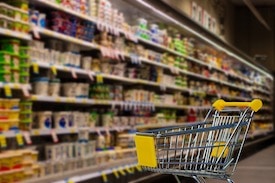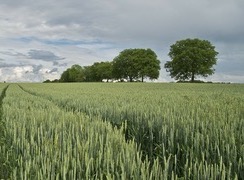Food Costs Slow Rising

Despite the higher prices, the percentage of our personal budgets spent on food decreased by 10%, due in part to the largest increase in personal disposable income since 2000 and the nosedive spending on food away from home. Overall, we spent an average of 8.6% of our budget on food, but the numbers show all households are not equal. Lower income households spent an average of 27% of income on food while the highest income spent seven percent. These statistics validate the increase of food insecurity and need for food assistance programs.

Where’s the Food … on the Shelf?
For most of us, seeing empty grocery shelves (except in the South the night before a snow storm is predicted), wasn’t a reality until March 2020. Suddenly, we saw toilet paper disappearing, then it was sanitizers, canned food, meat, potatoes and those pandemic bread baking supplies. But after the initial bumps of disrupted food supply, why are we still seeing empty spaces on grocery shelves?
According to Leah McGrath, RDN Corporate Dietitian for Ingles Markets, it’s about ingredient shortages, packaging and labor issues. As Leah told me during a recent conversation, “After 2020, shortages in 2021 became very specific like Gatorade, pet food, canned items and saltines … some due to ingredient shortages and others because of packaging (aluminum can) issues and even worker strikes.” She also mentions COVID-related worker/harvest issues and even the lack of truck drivers. Winter storms only compounded the issue. Her conclusion? “If a grocery store is fully stocked, you are very fortunate.”2
Farmers Still Farming
As a recent Farm Bureau blog noted “Supply chain issues aren’t a farm supply issue” as farmers and ranchers have navigated their way through similar supply chain issues to keep cows milking and crops harvested.3 Not only do those that produce our food experience these same grocery store issues but have to navigate their own “empty shelves” and labor issues. As Danita Rodibaugh, co-owner of Rodibaugh Farms, told me, “We can get crop inputs like fertilizer but at a much higher price than previous years. However, parts for equipment is an issue.” Due to supply chain disruptions, a combine or other piece of harvest equipment may have to remain idle when a repair is needed and the part is unavailable. When this happens, operations like Rodibaugh Farms have to outsource the work, increasing costs and decreasing efficiency.
Even though farmers are experiencing labor shortages, increased supply costs and fluctuating grain prices, few of those costs are passed on to consumers. What we need to remember is that crops like corn, soybeans and wheat are an integral part of the U.S. trade economy, and current world conflicts impact farmers more directly than the average consumer.
Where Do We Go from Here?

References
1. “Food Prices and Spending,” U.S. Department of Agriculture Economic Research Service, February 23, 2022.
2. Leah McGrath, @InglesDietitian on Twitter, 800-334-4936, [email protected].
3. “Ongoing Supply Chain Issues Aren’t a Farm Supply Issue,” American Farm Bureau Federation, by Jennifer Whitlock, January 11, 2022.
